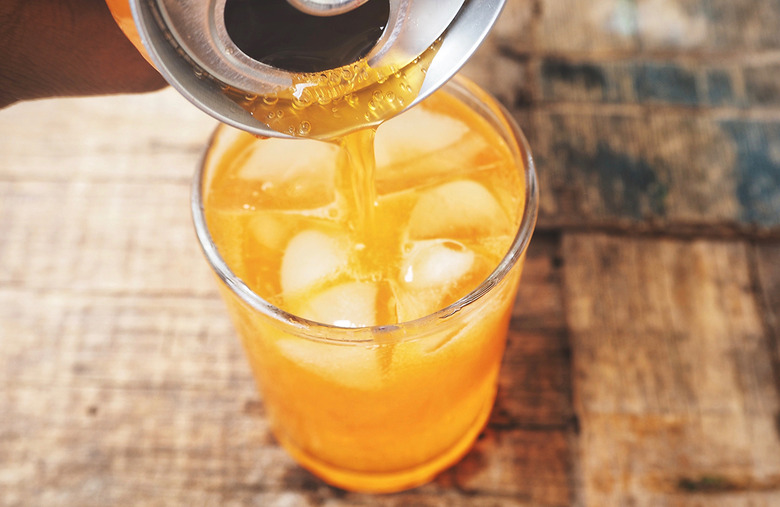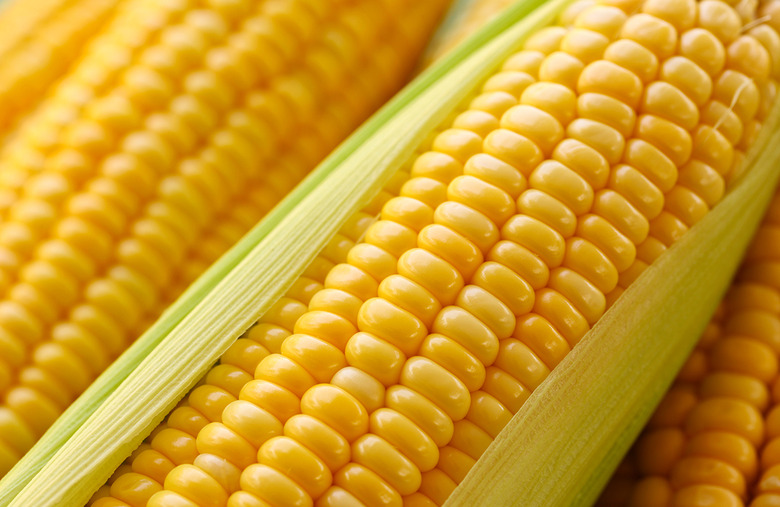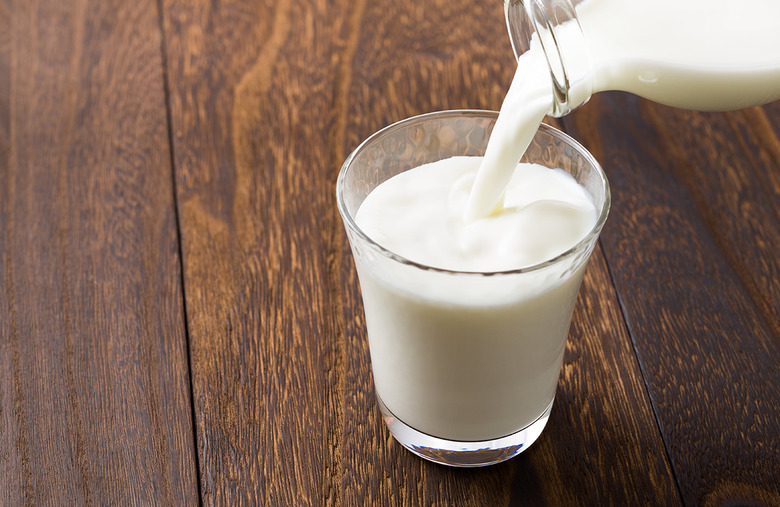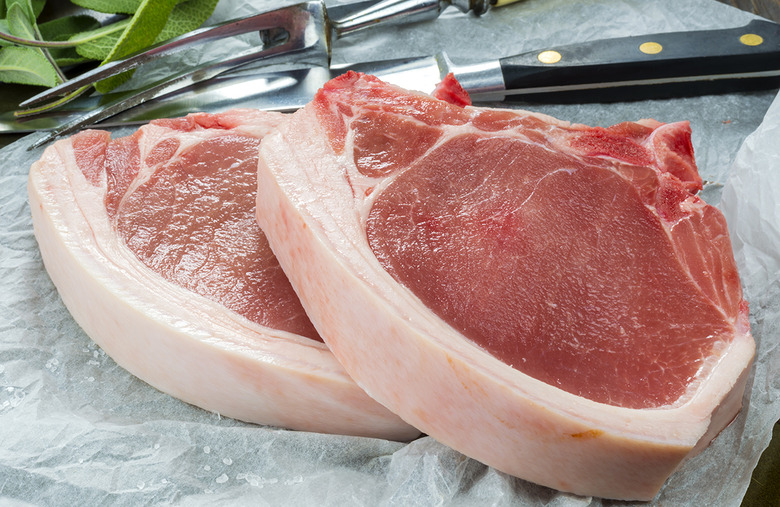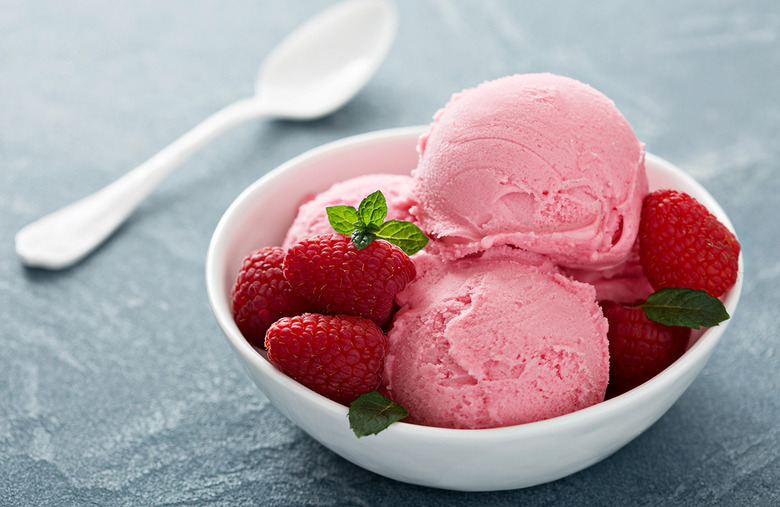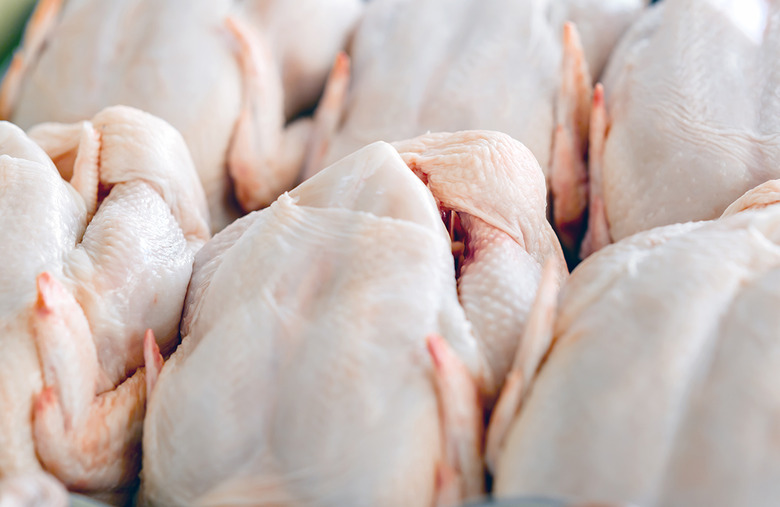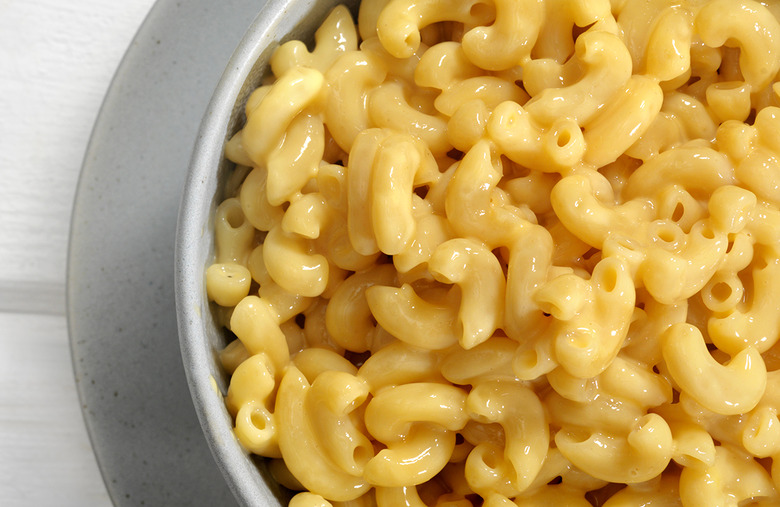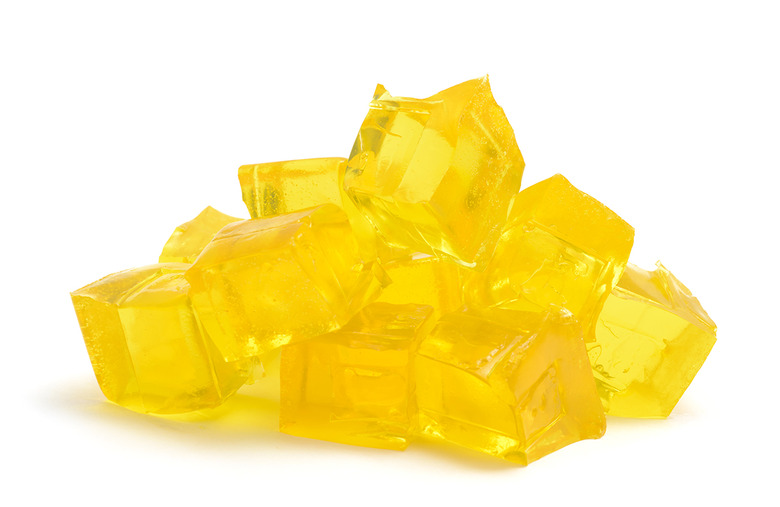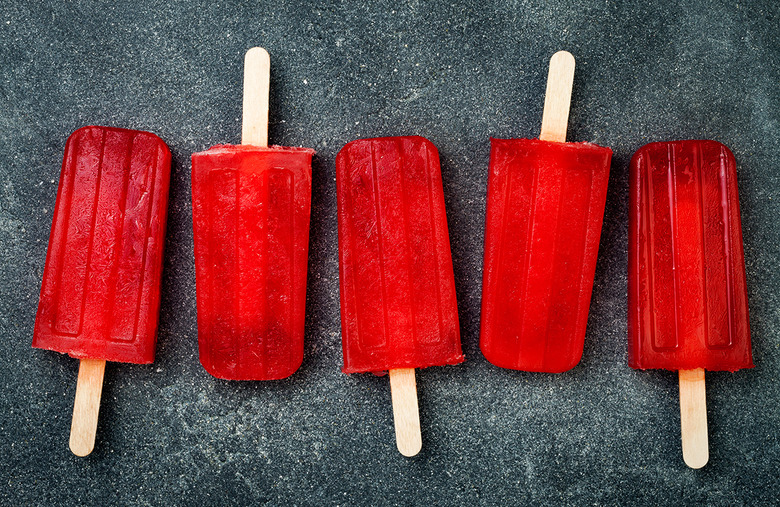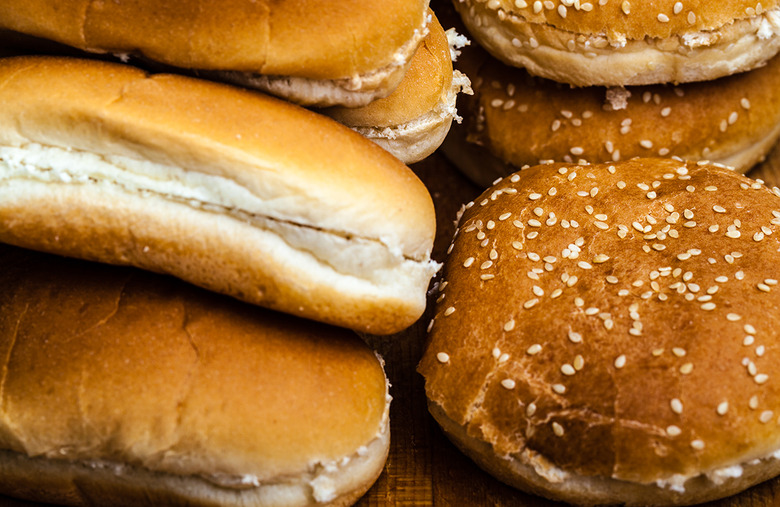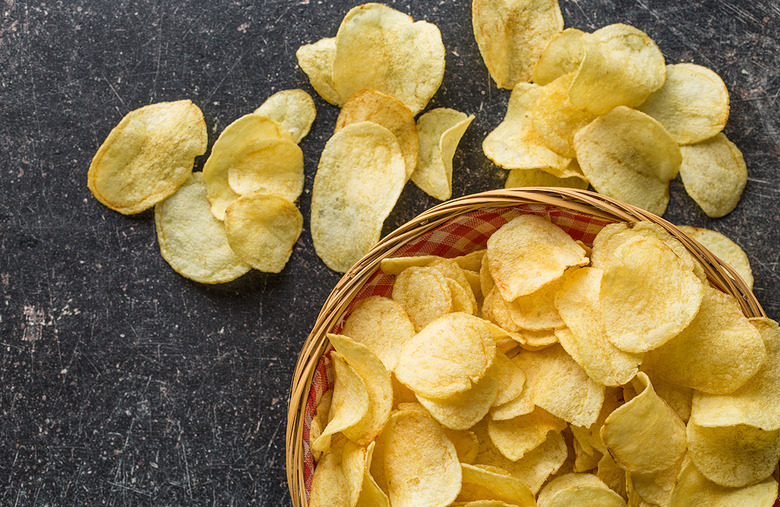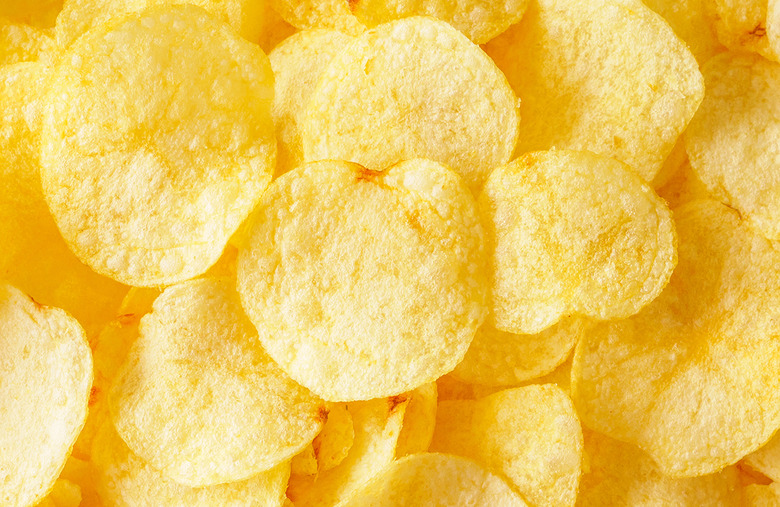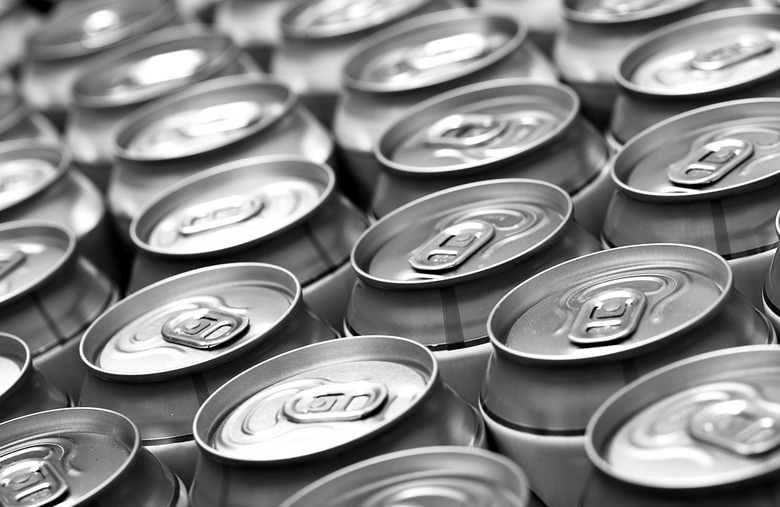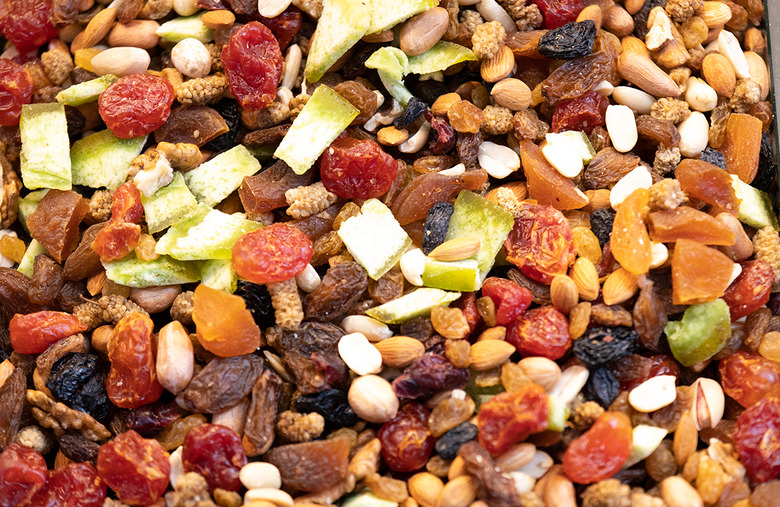Food Additives And Other US Ingredients Banned In Other Countries
From fast food cult-favorites to iconic cereals and sodas, some American food staples can be spotted all over the planet. However, in some places, select American products may be banned from supermarket shelves due to their ingredients. Here are things found in American food that while legal in the U.S., are entirely or partially illegal elsewhere.
Brominated vegetable oil (BVO)
Health concerns surrounding brominated vegetable oil (BVO), a food additive found in sodas, stems from one ingredient: bromine. Bromine has been shown to irritate the skin and mucous membranes. There are other reports of even scarier health effects related to ingesting large amounts of BVO. In one case, a man who drank 2 to 4 liters of soda a day experienced memory loss, loss of muscle coordination and more. BVO has been banned by several countries and the European Union. In the U.S., the FDA limits the concentration of BVO that can be used in a beverage.
Genetically modified fruits and vegetables
Many of the fruits and vegetables you see in American grocery stores have been genetically modified. GMOs are created for a number of reasons including disease resistance, nutritional quality, pest resistance and other factors affecting farming and distribution. The European Union has a strict legal regime in place for GMOs. GMOs and food or feed made from GMOs can be marketed in or imported into the EU, so long as they are authorized after passing strict evaluation and safety assessment requirements and meet standards on a case by case basis. In Sweden, GMOs are similarly limited and almost exclusive to animal fodder products. One of the most restrictive places for GMOs is Norway, where several EU-approved GMOs are illegal.
rBGH or rBST growth hormone
Bovine growth hormone (BGH), also known as bovine somatotropin (BST) is a natural growth hormone found in cows. Recombinant bovine growth hormone (rBGH) or recombinant bovine somatotropin (rBST) refers to bovine growth hormone that is made in a lab using genetic technology. Studies have shown rBGH and rBST to cause adverse health effects in cows. However, according to the American Cancer Society, evidence for potential harm to humans is inconclusive. Although use of these chemicals is still approved in the U.S., many large grocery store chains no longer carry milk from cattle treated with rBGH. Use of rBST is banned in Canada, Australia, New Zealand and the EU.
Meat fed with certain feed additives
Ractopamine is a feed additive banned in at least 160 countries, including China, Russia and several others across Europe. It's used to induce weight gain in pigs, cattle and turkeys. According to the Center for Food Safety, more pigs have been adversely affected by ractopamine than by any other animal drug. Safety concerns for animals include high stress levels, lameness, hyperactivity, broken limbs and even death. To avoid these products in the U.S., buy organic. In order to be certified organic, producers must feed livestock agricultural feed products that are 100% organic.
Potassium bromate
An oxidizing agent used as a food additive when bread-making, potassium bromate has been banned in the European Union, Canada, China, South Korea and some South American countries. Use in the U.S. remains legal, but California's Proposition 65 law dictates that bromated flour must be labeled as a carcinogen. Several restaurants in the U.S. have voluntarily cut potassium bromate from their ingredients, including Panera Bread, which added potassium bromate to its so-called "No-No List" along with BHA, BHT, ADA and other potentially harmful ingredients.
Carrageenan
Used as an emulsifier, stabilizer or thickener in foods, Carrageenan is naturally occurring and extracted from red seaweed. The additive is often found in dairy products like ice cream, chocolate milk, salad dressings, soy milk and some meat products too. Regulated by the FDA in the U.S., carrageenan cannot be used in baby formulas in the European Union. However, a 2014 World Health Organization committee concluded that the use of carrageenan in infant formula at concentrations up to 1000 mg/L is not of concern.
Chlorine-washed poultry
You might think of chlorine as what cleans your pool, but some of your food might be washed with it too. Chlorine can be a cost-effective way of cleaning foodborne bacteria and other contaminants off poultry, fruits or veggies. In the U.S., regulations for the process are determined by the FDA. The European Union maintains measures that prohibit the use of any substance other than water to remove contamination from animal products unless the substance has been approved.
Yellow No. 5
There are nine certified color additives approved by the Food and Drug Administration for use in food. In the U.S., foods containing Yellow No. 5 must properly identify it on their label so consumers sensitive to the dye who experience common allergy symptoms like skin irritation and hives may avoid it. Although not entirely illegal in the European Union and the United Kingdom, foods containing Yellow No. 5 must come with a warning label to inform consumers the food color "may have an adverse effect on activity and attention in children."
Yellow No. 6
There are two forms of yellow on the FDA-approved list of food colors. Yellow No. 6, known as Sunset Yellow, may be found in cereals, snack foods, baked goods, gelatins, beverages, dessert powders, crackers and sauces. Foods containing Yellow No. 6 must also come with a warning label in the European Union and the United Kingdom.
Red No. 40
Known as Allura Red, Red No. 40 is another FDA-certified color additive commonly found in cereal, beverages, puddings, dairy products and confections. Like Yellow No. 5 and Yellow No. 6, Red No. 40 must come with a warning label in the European Union and the United Kingdom to inform consumers the food color "may have an adverse effect on activity and attention in children."
Azodicarbonamide (ADA)
When bread is baked using azodicarbonamide (ADA), a whitening agent and dough conditioner, a breakdown chemical known as semicarbazide (SEM) forms. At high levels, SEM has been shown to increase the incidence of tumors when fed to female mice. In 2016, the FDA conducted a comprehensive exposure assessment of SEM and set recommended exposure estimates. The European Food Safety Authority (EFSA) assessed ADA's risk factors in 2005, noting that SEM exposure should be limited where possible, and the European Union banned this use of ADA.
Butylated hydroxyanisole (BHA)
Reasonably anticipated to be a human carcinogen based on sufficient evidence of carcinogenicity from studies in experimental animals, butylated hydroxyanisole (BHA) is a preservative used in some cereals, potato chips and other snack foods. In the U.S., limitations are set on how much total BHA and sister compound BHT (measured in parts per million) can be included in the food products. In the European Union, BHA is even more heavily regulated.
Butylated hydroxytoluene (BHT)
Butylated hydroxytoluene (BHT), a sister compound to BHA, is often used alongside BHA in packaged snack foods and breads as a preservative. In the U.S., BHT, like BHA, is "generally recognized as safe for use in food when the total content of antioxidants is not over 0.02 percent of fat or oil content." BHT is permitted abroad but heavily regulated and limited as a food additive.
Olestra
Olestra, also known as Olean, is an additive used in place of fats and oils in prepackaged savory snacks and ready-to-heat unpopped popcorn kernels. In the U.S., specified amounts of vitamins A, D, E and K must be added to foods containing olestra to compensate for the additive's interference with absorption of fat-soluble vitamins. The compound famously entered the food scene in the mid-90s as a big diet trend, only to lead consumers to experience many less-than-desirable side effects. Olestra is not available in Canada as well as other countries.
BPA
Studies have shown BPA, a chemical commonly used in polycarbonate plastics that store food and beverages, seeps into the foods and beverages they contain. Health concerns caused by exposure to BPA include possible effects on the brain and prostate gland of fetuses, infants and children; effects on children's behavior and a possible link between BPA and increased blood pressure. The FDA has said that BPA is safe at the very low levels that occur in some foods. However, in France, the use of BPA in all food and beverage packaging and utensils is banned. Ditching plastic containers is one way to be more sustainable and lower your carbon footprint.
Propylparaben
While beauty companies go paraben free, Americans can still be exposed to parabens in food. Propylparaben, a paraben found in popularly marketed trail mixes, tortillas, dessert cookies, muffins and other pastries, has been shown in recent studies to have potentially negative effects on endocrine systems and fertility. In 2006, propylparaben was removed from the list of food additives authorized for use in the European Union. Remember to read nutrition labels and avoid these other diet mistakes you make before noon.
More From The Daily Meal
Heart Healthy Foods to Add to Your Diet
20 Things Pregnant Women Should Add to Their Diet
19 Facts About Diet Soda That Might Make You Finally Stop Drinking It

